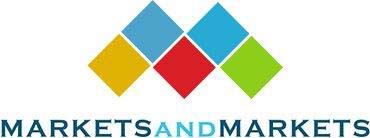The global Infection Control Market continues to expand at a strong pace as healthcare systems worldwide prioritize patient safety, sterilization standards, and advanced decontamination technologies. Valued at US$54.32 billion in 2024, the market rose to US$57.31 billion in 2025 and is projected to reach US$77.67 billion by 2030, advancing at a CAGR of 6.3% during the forecast period.
This sustained growth reflects the increasing emphasis on preventing healthcare-associated infections (HAIs), improving hygiene protocols, and adopting innovative sterilization and disinfection solutions across hospitals, laboratories, pharmaceutical companies, and public facilities.
Download PDF Brochure: https://www.marketsandmarkets.com/pdfdownloadNew.asp?id=1084
Market Dynamics Driving Growth
1. Rising Prevalence of HAIs
Healthcare-associated infections remain a major global challenge, significantly increasing morbidity, mortality, and healthcare costs. As a result, hospitals and clinical laboratories are investing heavily in robust sterilization workflows, surface disinfectants, and endoscope reprocessing technologies.
2. Growth in Surgical Procedures
The surge in elective and non-elective surgeries increases demand for sterile instruments, protective barriers, and advanced cleaning systems. This directly fuels procurement of sterilization equipment and consumables.
3. Advancements in Reprocessing & Sterilization Technologies
Innovations such as low-temperature sterilization systems, advanced washer-disinfectors, and automated endoscope reprocessors are improving workflow efficiency while ensuring compliance with stringent safety standards.
4. Disinfection in the Food Industry
Growing consumer awareness and regulatory pressure have increased the adoption of sterilization and disinfection products for food safety—further broadening the market beyond hospital use-cases.
5. Growing Trend Toward Outsourcing
Pharmaceutical firms, medical device manufacturers, and hospitals increasingly outsource sterilization and reprocessing activities to specialized service providers. This shift supports scalability, quality assurance, and cost efficiency, adding momentum to market expansion.
Market Segmentation Analysis
By Treatment
The market is segmented into:
-
Sterilization products & services
-
Cleaning & disinfection products
-
Protective barriers
-
Endoscope reprocessing products
-
Other infection control products
Cleaning & disinfection products emerged as the most widely adopted category. These products are essential for routine sanitation and play a central role in breaking the infection transmission chain. Their extensive use across healthcare, pharmaceutical, research, and public infrastructure environments continues to boost segment growth.
Key Insights: API Segment Clarification (Market Overlap)
Although primarily related to the API market (but referenced within the prompt), it’s useful to note:
-
Synthetic APIs hold the largest market share due to strong regulatory approvals, scalable chemical synthesis technologies, and efficient therapeutic performance at lower doses.
-
Biotech APIs, while more complex and costly, are expanding in high-value therapeutic areas such as oncology and autoimmune diseases.
This distinction highlights the interconnectedness of infection control with pharmaceutical manufacturing and quality assurance systems.
Geographical Breakdown
The infection control market is divided into six regions:
-
North America
-
Europe
-
Asia Pacific
-
Latin America
-
Middle East & Africa
-
GCC Countries
North America Leads the Global Market
In 2024, North America dominated the market owing to:
-
Advanced healthcare infrastructure
-
Stringent regulatory environments
-
High adoption of sterilization and disinfection technologies
-
Larger patient and surgical volumes
-
Strong presence of key manufacturers
This dominance is expected to continue, supported by investments in hospital infection prevention programs and cutting-edge sterilization solutions.
Leading Players in the Infection Control Market
Prominent companies shaping the global competitive landscape include:
-
STERIS (US)
-
Reckitt Benckiser Group plc. (UK)
-
Fortive (US)
-
Sotera Health (US)
-
Solventum (US)
-
Getinge AB (Sweden)
-
Ecolab, Inc. (US)
-
Olympus Corporation (Japan)
-
Envista (US)
-
PAUL HARTMANN AG (Germany)
STERIS (US)
STERIS commands a leading position with a comprehensive portfolio that includes:
-
Steam & low-temperature sterilizers
-
Automated endoscope reprocessors
-
Washer-disinfectors
-
Contract sterilization services
-
Surgical & sterile processing consumables
The company continues to scale globally through innovation and strategic acquisitions, positioning itself as a trusted partner for infection prevention.
Reckitt Benckiser Group plc. (UK)
Known for iconic brands like Dettol and Lysol, Reckitt holds a strong presence in consumer and professional hygiene solutions. During global health crises, the company accelerated production and distribution of disinfectant essentials. Its strategy focuses on:
-
Innovation in antimicrobial formulations
-
Expansion of B2B hygiene solutions
-
Widening reach in institutional settings
Conclusion
The global infection control market will continue to gain momentum as healthcare systems prioritize safety, technological innovation accelerates, and regulatory pressures intensify. The growing need for sterilization, disinfection, and contamination control across multiple industries positions this market for sustained long-term growth.
Request Sample Pages: https://www.marketsandmarkets.com/requestsampleNew.asp?id=1084

